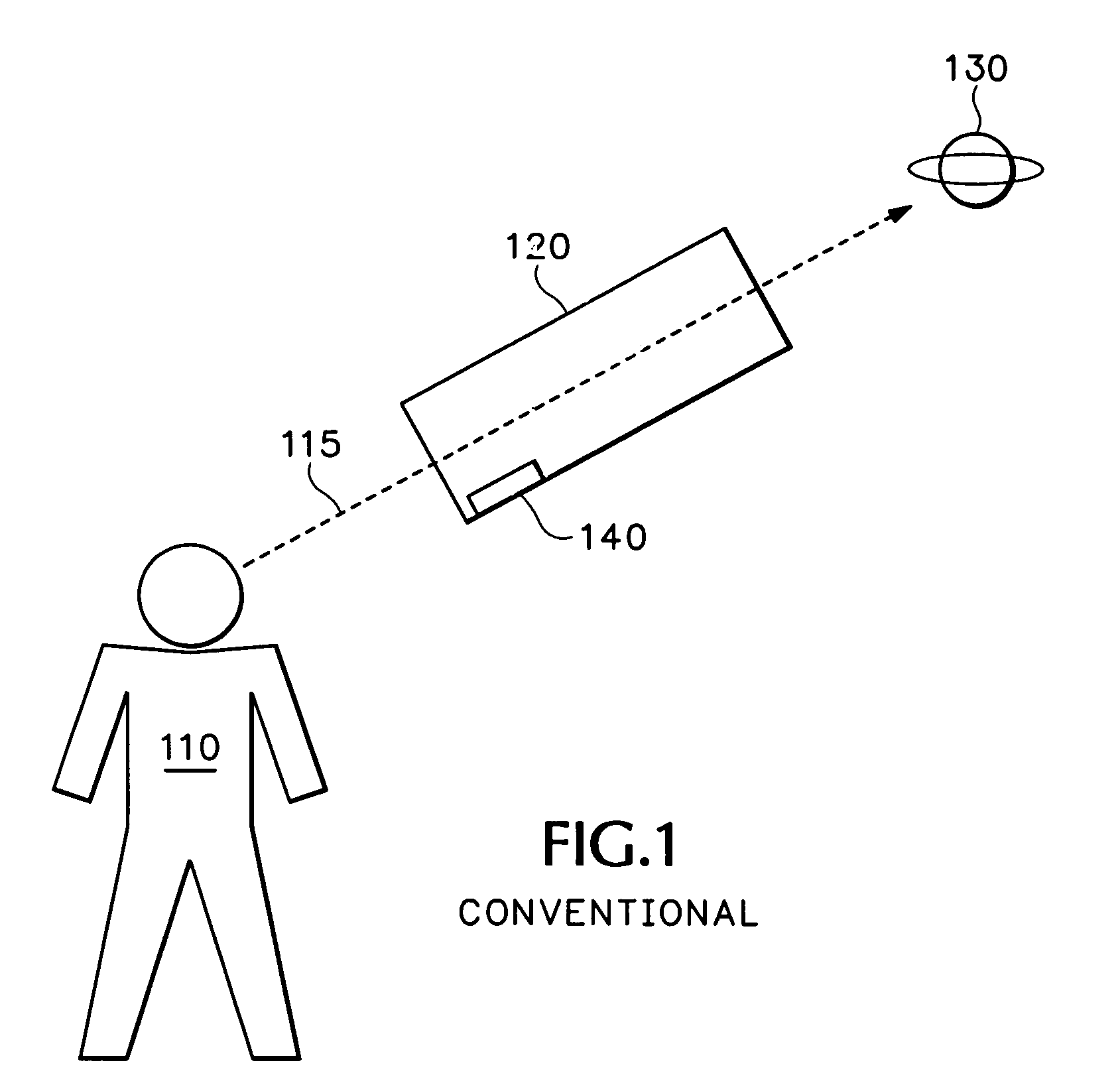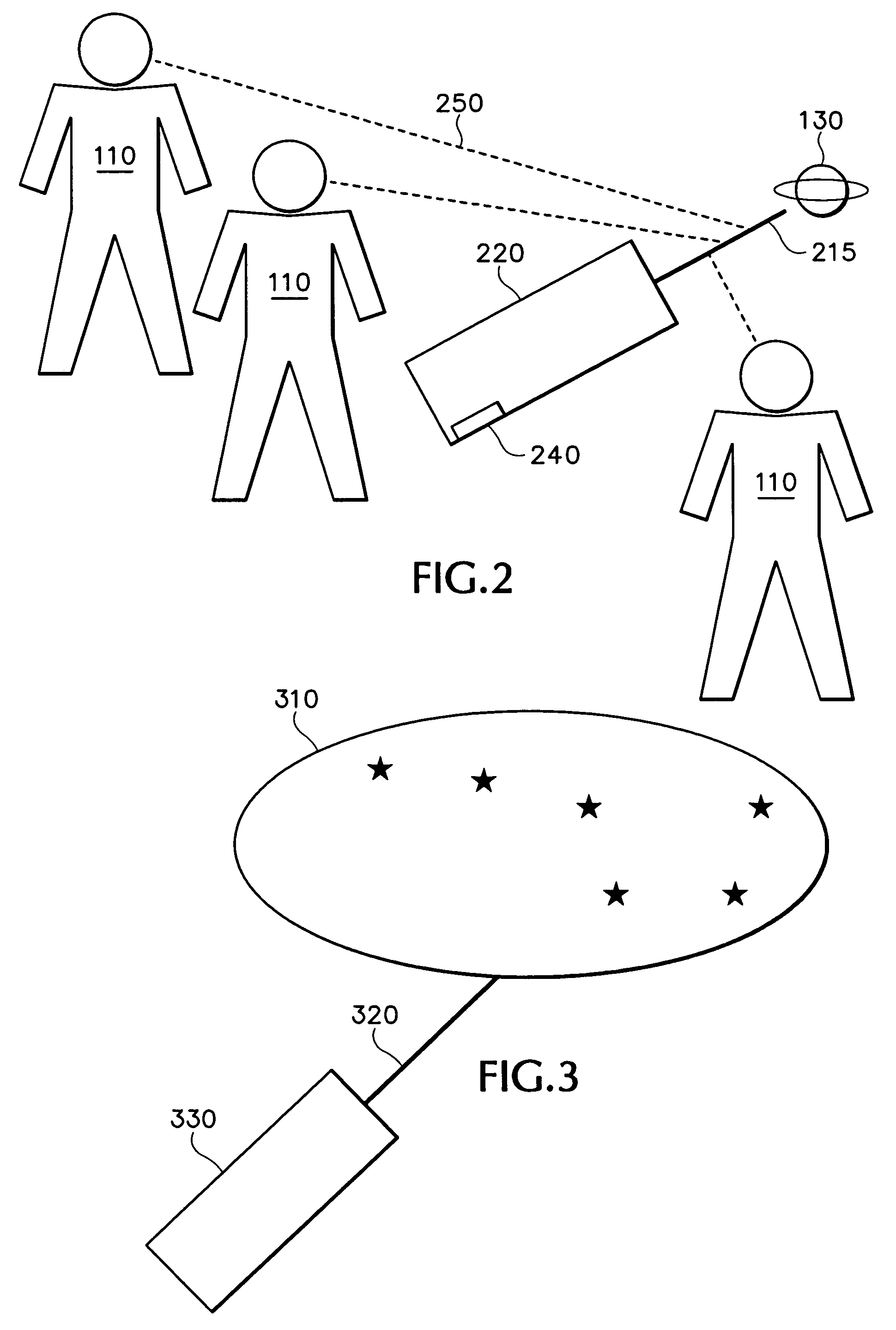Laser guided celestial identification device
a celestial identification and laser guided technology, applied in the field of celestial observation, can solve the problems of difficult to locate a specific object in the sky, requiring alignment and a solid physical mounting, and requiring a large amount of instruments, so as to improve the range, accuracy and utility of the celestial locating device. , the effect of efficient determination of altitud
- Summary
- Abstract
- Description
- Claims
- Application Information
AI Technical Summary
Benefits of technology
Problems solved by technology
Method used
Image
Examples
Embodiment Construction
[0012]An object's location in the sky is unambiguously defined by its azimuth and altitude. Azimuth is a measured angle, on a plane approximately parallel with the Earth's surface, between a desired direction and a reference direction such as north. East, for example is an angle +90 degrees away from north, while south is ±180 degrees from north, and west +270 degrees away. North, south, east, and west are all representations of azimuth. Altitude is a measured angle on a plane perpendicular to the Earth's surface. By convention, an altitude of zero degrees points toward the horizon while an azimuth of ninety degrees points directly overhead.
[0013]With reference to FIG. 1, the traditional way to determine an object's coordinates is to construct an aiming device, hereafter referred to as “aimer ”, by equipping an optical viewing device 120 with altitude and azimuth sensors 140 that are aligned with a viewing axis 115 of the viewing device. The viewer 110 sights an object of interest 1...
PUM
 Login to View More
Login to View More Abstract
Description
Claims
Application Information
 Login to View More
Login to View More - R&D
- Intellectual Property
- Life Sciences
- Materials
- Tech Scout
- Unparalleled Data Quality
- Higher Quality Content
- 60% Fewer Hallucinations
Browse by: Latest US Patents, China's latest patents, Technical Efficacy Thesaurus, Application Domain, Technology Topic, Popular Technical Reports.
© 2025 PatSnap. All rights reserved.Legal|Privacy policy|Modern Slavery Act Transparency Statement|Sitemap|About US| Contact US: help@patsnap.com



